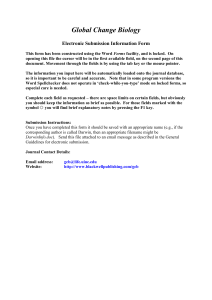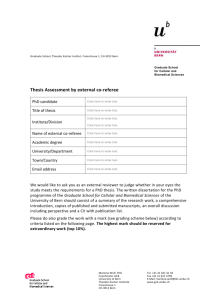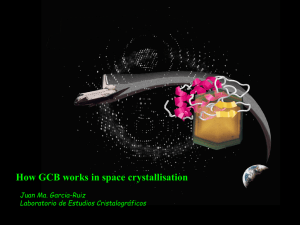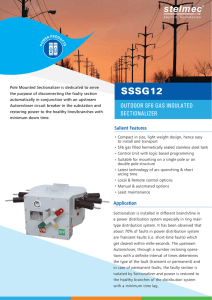cigre-106
advertisement
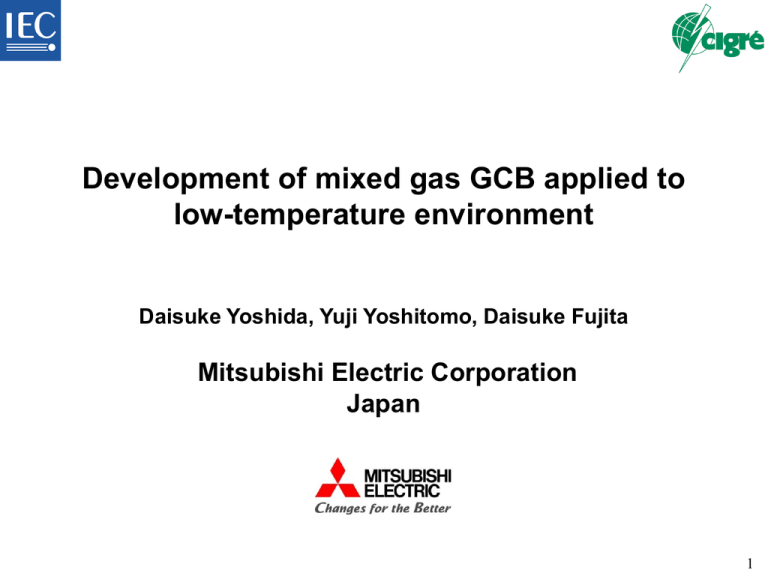
Development of mixed gas GCB applied to low-temperature environment Daisuke Yoshida, Yuji Yoshitomo, Daisuke Fujita Mitsubishi Electric Corporation Japan 1 Introduction Development of mixed gas GCBs • A gas mixture of SF6 and CF4 enables the application of GCBs to extremely low ambient temperatures (lower than -40 deg C) • Two mixed gas GCB developments are introduced using the same hardware as pure SF6 GCB – 800kV GCB – 245kV GCB Advantage of spring operating mechanism • Maintenance work • Reliability during operation • Application of torsion bar spring 2 800 kV mixed gas circuit breaker 2-break Interrupter Main Grading contacts capacitor Mixed gas Arcing contacts Closing resistor Tank Puffer cylinder Support insulator Insulating rod Closing resistor contacts Linkage connection Linkage guide Pneumatic Operating Mechanism Closing coil Moving drive rod Trip coil Control Valve Air cylinder 800 kV gas circuit breaker during installation Closing spring Shock absorber 3 Feature of 800 kV GCB 550 kV 1-break GCB interrupter is used for each break Interrupters and closing resistors are arranged so that all the moving contacts are driven simultaneously by one mechanism through an insulating rod Simple pneumatic operating mechanism is used to obtain large operating energy Arc contacts Main contacts SF6 and CF4 mixed gas Closing resistor Grading capacitor Tank Puffer cylinder Closing resistor contacts Support insulator Linkage connection Insulating rod Linkage guide 4 Rating of 800 kV GCB Same hardware is used for SF6 and mixed gas Lower specification is applied on dielectric capability and interrupting capability while application at -50 deg C is achieved Medium Pure SF6 gas SF6 and CF4 mixed gas Rated voltage 800 kV Rated lightning impulse withstand voltage (phase to earth) 2050 kV 2100 kV 2 μs chopped wave 2640 kV - Rated normal current Rated breaking current 4000 A 63 kA 50 kA Rated interruption time Operation sequence Operation mechanism Rated gas pressure Ambient air temperature 2 cycles O-0.3sec.-CO-1min.-CO Pneumatic (Open), Spring (Close) 0.59 MPa-g -30 to +50 deg C -50 to +40 deg C 5 Type tests 800 kV GCB during interruption test 800 kV GCB during high and low temperature test 6 245 kV mixed gas GCB 1-break Interrupter Insulating drive rod Tank Main contacts Support insulator Puffer cylinder Nozzle Arcing contacts Mixed gas Support insulator Spring Operating Mechanism 245 kV mixed gas GCB during short-circuit tests Helical coil spring for IPO Torsion bar spring for 3GO 7 Feature of 245 kV GCB Same interrupter is used for pure SF6 and mixed gas, IPO and 3GO Spring operating mechanism is applied to achieve low lifetime cost and high reliability of circuit breaker Common hardware is used between pure SF6 and mixed gas IPO GCB: Helical spring operating mechanism 3GO GCB: Torsion bar spring operation mechanism Independent pole operation (IPO) Closing coil Three pole gang operation (3GO) Trip coil Torsion bar spring Charging motor Trip coil for opening Closing coil Output lever Shock absorber torsion bar spring Helical spring for Charging Closing linkage Shock connection absorber for closing closing gear Charging motor Output lever Ratings of 245 kV GCB Same hardware is used for SF6 and mixed gas Lower specification is applied on dielectric capability and interrupting capability while application at -50 deg C is achieved Medium Pure SF6 gas Rated voltage SF6 and CF4 mixed gas 245 kV Rated lightning impulse withstand voltage (phase to earth) 900 kV 950 kV 2 μs chopped wave 1160 kV - Rated normal current 4000 A Rated breaking current 50 kA without TRV capacitor Rated interruption time Operation sequence Operation mechanism Rated gas pressure Ambient air temperature 50 kA with TRV capacitor 40 kA without TRV capacitor 2 cycles 3 cycles O-0.3sec.-CO-1min.-CO Spring (Open, Close) 0.59 MPa-g -30 to +50℃ deg C -50 to +40 deg C 9 Advantage in maintenance work Number of parts and maintenance items Item Spring GCB Hydraulic GCB Number of Parts 60% 100% Number of parts for replacement 40% 100% Number of oil seals >1% 100% Inspection item 60% 100% Test item 40% 100% maintenance fee(%) Maintenance Hydraulic operated GCB 550kV hydraulic GCB Spring operated GCB 550kV spring GCB 100% 80% 100% 60% 40% 40% 20% 0% 0 6 12 18 24 Field aging (year) 30 36 Comparison of Maintenance Fee 10 Advantage in reliability Less failure is expected in spring operated GCB than in hydraulic operated GCB Many of the failures experienced are related to hydraulic system Failure rate of GCBs Failure rate of each functional element 11 Feature of torsion bar spring Torsion bar spring Helical spring F T Shape Torsion bar spring configuration 10% 100% Mass per charged energy 65% 100% Equivalent spring mass 1% 100% Kinetic energy consumed by spring 0% 25% 100% 75% Driving energy for interrupter Fixed end Rotating end Volume joint end Torsion bar spring gives higher spring energy for operation because kinetic energy loss is ignorable 550kV spring operated GCB A torsion bar spring operating mechanism containing higher operating energy and lightweight interrupter Sufficient opening speed for capacitive current switching can be achieved at rated voltage of 550kV 550 kV 2-break GCB Torsion bar spring operating mechanism 13 Conclusion A gas mixture of SF6 and CF4 enables the application of GCBs to extremely low ambient temperatures (less than -40 deg C). Development of 800kV mixed gas GCB and 245kV GCB is introduced. Same hardware as SF6 GCB is used and lower specification on dielectric capability and interrupting capability is applied while application at -50 deg C is achieved. Advantages of spring operating mechanism is presented. Low maintenance work and high reliability can be achieved. Torsion bar spring can achieve higher operating energy than helical coil spring. Torsion bar spring operating mechanisms have applied to 550kV spring operated GCB with lightweight interrupter. 14
